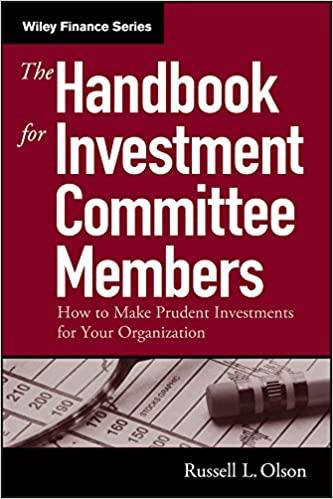Question
A firm's current asset levels rise and fall with business cycles and seasonal trends. There are three alternative policies regarding the level of current assets
A firm's current asset levels rise and fall with business cycles and seasonal trends. There are three alternative policies regarding the level of current assets a firm holds. A (1. matching, relaxed, or restricted) investment policy means that relatively large amounts of cash, marketable securities, and inventories are carried, and a liberal credit policy results in a high level of receivables. A (2. matching, relaxed, or restricted) investment policy means that the holdings of cash, marketable securities, inventories, and receivables are constrained. A moderate investment policy is an investment policy that lies between the two extremes. Changing technologies (3. cannot or can) lead to changes in the optimal working capital investment policy Current asset levels vary relative to seasonal and cyclical fluctuations and they rarely drop to zero. (4. Temporary, permanent, or operating) current assets are those current assets that a firm must carry even at the trough of its cycles. (5. Temporary, permanent, or operating) current assets are those current assets that fluctuate with seasonal or cyclical variations in sales. Investments in current assets must be financed. There are three alternative approaches for financing current assets. The (6. maturity matching, aggressive financing, or conservative financing) financing policy that corresponds with the maturities of assets and liabilities. This represents an (7. moderate, aggressive, or conservative) financing policy. A (n) (8. moderate, aggressive, or conservative) financing policy is one in which the firm finance some of ts permanent assets with short-term debt. A (n) (10. moderate, aggressive, or conservative) financing approach means that a firm uses long-term capital to finance all permanent current assets and to meet some of the seasonal needs. With this approach, the firm will use a small amount of short-term credit to meet its peak requirements, but it also meets part of its seasonal needs by storing liquidity in the form of (11. marketable, bond, or stock) securities. Using short-term debt has both advantages and disadvantages over the use of long-term debt. Because the yield curve is normally (12. downward sloping, upward sloping, or horizontally sloping), the cost of long-term debt is generally (13. higher than, lower than, equal to). However, short-term debt is riskier to the borrowing firm for two reasons. First, the interest expense of short-term debt fluctuates widely compared to the interest expense on long-term debt which will be relatively stable over time. Second, if a firm borrows heavily on a short-term basis, a temporary recession may adversely impact its financial ratios and render it unable to repay this debt. If the firm's financial position weakens, the lender may not renew the loan which will force the firm into bankruptcy
Step by Step Solution
There are 3 Steps involved in it
Step: 1

Get Instant Access to Expert-Tailored Solutions
See step-by-step solutions with expert insights and AI powered tools for academic success
Step: 2

Step: 3

Ace Your Homework with AI
Get the answers you need in no time with our AI-driven, step-by-step assistance
Get Started


